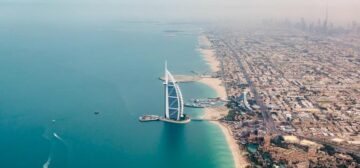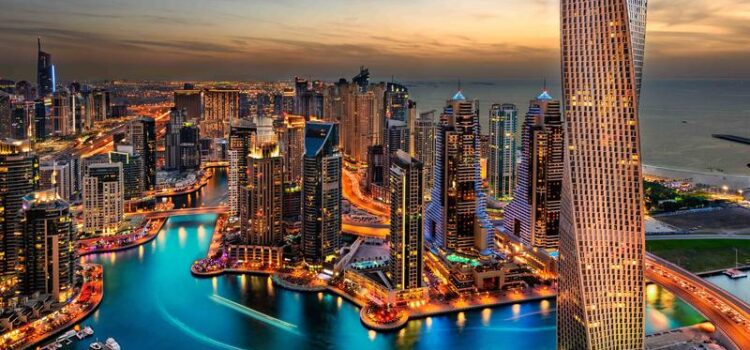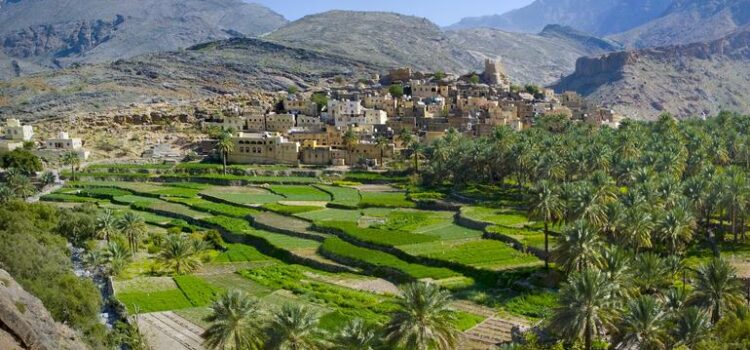The main hub for air transport in the United Arab Emirates is Dubai airport, which is served by several major airlines, most notably Dubai-based Emirates. Direct flights connect Dubai to Durban, Johannesburg, Cape Town , London,Sydney, Melbourne, Karachi, Tehran, Riyadh, Mumbai, Kolkata, Hong Kong, Paris, Zurich, Frankfurt, Houston, Milan,Madrid, New York City, Los Angeles, San Francisco, Seattle, Toronto, São Paulo and many other major cities in Europe,Asia, Australia, North America and Africa.After Dubai, the airport at Abu Dhabi has the next best international connections. Abu Dhabi-based Etihad Airways now offers direct flights from New York, Toronto and many other airports in Europe and Asia.Other major airlines serving Abu Dhabi include British Airways from London-Heathrow, KLM from Amsterdam, Lufthansa from Frankfurt and Singapore Airlines from Singapore and Jeddah.For low-cost flights, Air Arabia has set up a hub at Sharjah airport (which is very close to Dubai), and flies there from many cities in the Middle East and India.There is road access to the United Arab Emirates from Saudi Arabia in the south and Oman in the east. All highways in the UAE are in excellent condition, but there is a huge amount of traffic between Sharjah and Dubai, as well as a 4 AED charge to cross the Salik toll gate. A prepaid Salik Tag is required for this.There is a large network of dhows which transport goods throughout the Gulf and India. It may be possible to buy passage on one of these boats. They call at all coastal cities in the UAE, including Dubai and Abu Dhabi.Public transportation within most cities remains rudimentary. Dubai is building extensive Metro, monorail and tram networks, and has invested heavily in the local bus network in recent years. The other emirates offer very little public transportation. Abu Dhabi has a network of city buses that cost Dh2 per trip and are fairly reliable, but can be overcrowded for male passengers. Intercity bus services are fast, comfortable and reasonably frequent.In the cities of Dubai, Abu Dhabi, and Sharjah, taxis are widely available. They are relatively cheap in Abu Dhabi and Sharjah. A ride to anywhere within the city of Abu Dhabi will cost approximately US$10, as they charge solely by distance traveled. A night surcharge of US$3 may be added after 10PM, depending on your driver.The legal driving age in the United Arab Emirates is 18. The UAE has a modern road system. Renting a car or driving in the UAE requires an international driver’s license, which is simply a translation of your standard license and can be acquired at a local automobile association. If you have UAE residency status, you must obtain a local driver’s license. This can be a simple process that must be completed and can be done in 20 min but only if you are from a specific list of countries (predominantly Western). If you are from an Asian country, you currently have to undergo 40 classes at a local driving school and get through a pretty tough license exam. This is changing, though, and it may apply to all nationalities soon.Car rentals are slightly cheaper than in the US There is a flat fee per day for renting a car, based upon the car’s size. Petrol (gasoline) is, by US and European standards, inexpensive. The road system is based along European standards, with many roundabouts and highly channeled traffic. But the signs are readily understandable and are, in most places, clear and coherent. Drivers in the UAE, particularly in the urban areas, tend to be highly aggressive and often use tactics that range from the stupid to the disastrous. This may perhaps stem from the traffic, which can be extremely congested in the urban areas, or from other factors.People in the UAE drive extremely fast, and some are completely reckless: overtaking by the right is the rule, speed limits are ignored by many, even heavy trucks. Last-second lane change seems to be a national sport. The UAE has the third-highest death rate from traffic accidents in the world (just behind Saudi and Oman).Be especially careful when you spot a tinted-window SUV at night: the black windows make the driver not see you and change lanes. Theoretically forbidden, tinting windows is widespread among young Arabs and is generally associated with poor driving skills and fast driving.There are now some good local city maps, particularly for Dubai (the Explorer series of books). Be aware that construction is on-going, sometimes rapidly changing the road networks, so maps capture only a “point in time.” Sharjah remains poorly mapped. A website offered the first decent online maps of the UAE. Google Earth does offer solid satellite pictures but at a level of detail good mainly for broad reference purposes. The lack of good maps or signage makes the use of a compass or GPS sometimes useful if you want to get off the highway.Desert safaris or “wadi bashing” are good attractions in the vicinity of Dubai, but great care needs to be taken while choosing a hired vehicle; it should be a four wheel drive. Desert safaris are also generally pre-designed with travel agents and can give you good deal as well on quantity.






